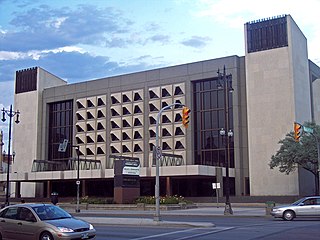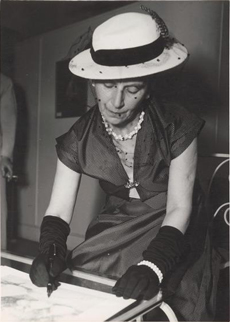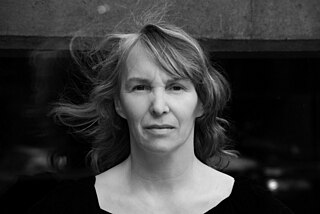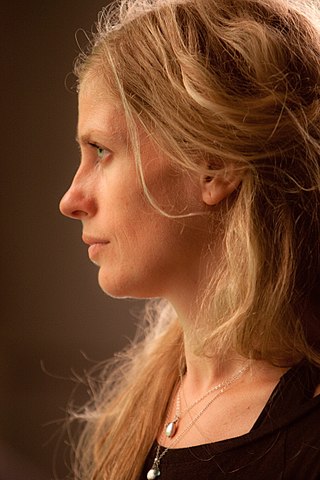Related Research Articles

Choreography is the art or practice of designing sequences of movements of physical bodies in which motion or form or both are specified. Choreography may also refer to the design itself. A choreographer is one who creates choreographies by practising the art of choreography, a process known as choreographing. It most commonly refers to dance choreography.

Mary Wigman was a German dancer and choreographer, notable as the pioneer of expressionist dance, dance therapy, and movement training without pointe shoes. She is considered one of the most important figures in the history of modern dance. She became one of the most iconic figures of Weimar German culture and her work was hailed for bringing the deepest of existential experiences to the stage.
Dance in Quebec includes dances that are specific to the province of Quebec, Canada, it comprises traditional group, couple, and solo dance as well as contemporary jazz, ballet, and modern dance. There are a number of dance companies and dance schools. Quebec's most renowned organizations are Les Ballets Jazz de Montréal, Les Grands Ballets canadiens de Montréal as well as the contemporary dance crew La La La Human Steps, directed by the choreographer Édouard Lock and his emblematic dancer Louise Lecavalier.

The Royal Winnipeg Ballet is Canada's oldest ballet company and the longest continuously operating ballet company in North America.

Dame Marie Rambert, Mrs Dukes DBE was a Polish-born English dancer and pedagogue who exerted great influence on British ballet, both as a dancer and teacher.
Ludmilla Chiriaeff was a Latvian-Canadian ballet dancer, choreographer, teacher, and company director.
Brian Ronald Macdonald was a Canadian dancer, choreographer and director of opera, theatre and musical theatre.
Anik Bissonnette OC CQ is a Canadian ballet dancer, who started her professional ballet career with the Ballet de Montreal Eddy Toussaint in the 1980s and was a principal dancer starting in 1990 with Les Grands Ballets Canadiens. Her father, Jean Bissonnette, was a famous television director with Télévision de Radio-Canada.
Louis Robitaille, is a Canadian ballet dancer and artistic director. He was discovered at a high school dance performance and received a scholarship to train at Les Ballets Jazz de Montreal. He danced with Anik Bissonnette in Eddy Toussaint's dance company, where they garnered acclaim. He also danced with Les Grands Ballets Canadiens as a principal dancer.

Louise Bédard is a Canadian dancer, choreographer and teacher who is active on the contemporary dance.

Crystal Pite is a Canadian choreographer and dancer. She began her professional dance career in 1988 at Ballet BC, and in 1996 she joined Ballett Frankfurt under the tutelage of William Forsythe. After leaving Ballett Frankfurt she became the resident choreographer of Montreal company Les Ballets Jazz de Montreal from 2001 to 2004. She then returned to Vancouver where she focused on choreographing while continuing to dance in her own pieces until 2010. In 2002 she formed her own company called Kidd Pivot, which produced her original works Uncollected Work (2003), Double Story (2004), Lost Action (2006), Dark Matters (2009), The You Show (2010), The Tempest Replica (2011), Betroffenheit (2015), and Revisor (2019) to date. Throughout her career she has been commissioned by many international dance companies to create new pieces, including The Second Person (2007) for Netherlands Dans Theater and Emergence (2009) for the National Ballet of Canada, the latter of which was awarded four Dora Mavor Moore Awards.
José Navas is a contemporary choreographer and dancer born in Venezuela in 1965, and based in Montreal, Quebec.

Pierre Brabant was a Canadian composer and pianist. He appeared in concerts and recitals throughout Canada and performed numerous times on Canadian television and radio. He wrote music for a number of programs for the Canadian Broadcasting Corporation and worked as a composer, arranger, and music director for numerous recordings by a variety of Canadian artists. Starting in 1987 he performed regularly in concerts and recitals as the accompanist for opera singer Joseph Rouleau.
Ginette Laurin C.M. is a Canadian dancer, choreographer and artistic director. In 1984, she founded the dance group named O Vertigo, based in Montreal. O Vertigo is dedicated to creation in new dance and to broadcasting Ginette Laurin's works all over the world.
Iro Tembeck (1946–2004) was a Canadian dancer, choreographer, and dance historian. After emigrating to Montreal in 1967, she taught at the academy of Les Grands Ballets Canadiens, and danced with Le Groupe Nouvelle Aire in the early 1970s. She founded Axis Danse with Christina Coleman in 1977, and in 1980, Tembeck became a professor in the Dance Department at Université du Québec à Montréal, where she also co-founded the choreographic research group Artscene. Tembeck signed over 40 choreographic works, which were produced with Le Groupe Nouvelle Aire, Axis Danse, Les Ballets Jazz de Montréal, and Les Ballets Eddy Toussaint.
Geneviève Salbaing was a Canadian dancer, choreographer and director. She was born in Paris but moved to Casablanca shortly afterwards. She began taking classes at three years old and returned to Paris to continue her training. After dancing with the Washington Concert Ballet for three years, she moved to Montreal and danced for various choreographers. After getting injured she turned her attention to choreography and co-founded Les Ballets Jazz de Montreal. She became its artistic director and opened dance studios in various Canadian cities to train dancers in the ballet-jazz style. She retired as its artistic director in 1992. In 1987 Salbaing was appointed a member of the Order of Canada and in 2012 she became an officer of the National Order of Quebec.

Miriam Elaine Adams is a dancer, choreographer, and dance archivist from Toronto. After performing with the National Ballet of Canada, she co-founded 15 Dance Laboratorium with her husband Lawrence Adams. It was the first theatre to present experimental dance in Toronto. In 1983, Miriam and Lawrence launched Encore! Encore! to document the works of six Canadian choreographers from the 1940s and 1950s, and in 1986 they launched a centre for archiving dance and publishing books called Arts Inter-Media Canada/Dance Collection Danse (DCD).
Jeanne Renaud was a Canadian dancer, choreographer, and artistic director, considered to be one of the founders of modern dance in Quebec. Born in Montreal, Renaud studied music at the École de musique Vincent-d'Indy. She trained in classical ballet with Elizabeth Leese and in modern dance with Gérald Crevier in Montreal. She went on to study with Merce Cunningham, Hanya Holm and Mary Anthony in New York City. In 1948, she gave a recital with Françoise Sullivan in Montreal. She taught dance in Paris from 1949 to 1954. In 1952, she joined with Les Automatistes who had left Quebec for Paris to present a performance at the American Club there. From 1959 to 1965, she was associated with Françoise Riopelle at the École de Danse Moderne de Montréal as dancer, teacher and choreographer. In 1966, she founded Le Groupe de la Place Royale, the first official modern dance company in Quebec, with Peter Boneham; she was dancer, choreographer, artistic director and administrator for Le Groupe until 1972.
Linda Rabin is a Canadian dancer, choreographer and educator. The daughter of Max Rabin, a clothing salesman, and Mina Rosen, a Polish immigrant, she was born in Montreal. Rabin studied modern dance with José Limón, with Anna Sokolow, at the Juilliard School where she received a Bachelor of Fine Arts and at the Martha Graham School. She also studied Asian dance forms and Asian dance theatre in Japan, Bali, India and Nepal. She has studied Body/Mind Centering, Alexander Technique, shiatsu, Pilates and ideokinesis.
Judith Rose Marcuse is a Canadian dancer and choreographer. She created over 100 choreographic works many of which are focused on community-engaged art for social change. Marcuse's performance and choreographic work has been recognized in Canada and around the world.
References
- 1 2 3 4 5 6 7 Iro Valaskakis Tembeck. "Ruth Abramovitsch Sorel". The Canadian Encyclopedia . Retrieved 24 April 2010.
- ↑ Gilles Potvin. "Pierre Brabant". The Canadian Encyclopedia . Archived from the original on January 5, 2006. Retrieved 24 April 2010.